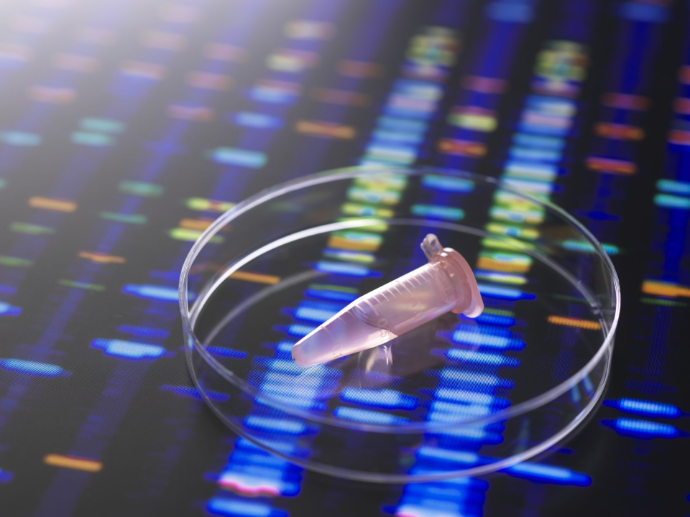Making the difference.
Our mission Glyko answers the need for simple, rapid and reliable technology to analyze carbohydrates. Our patented FACE® technology can be Imager, carbohydrate gel, and carbohydrate structure using CarbDraw softwareused to separate, analyze, sequence, and synthesize carbohydrates. We offer a full range of analytical and diagnostic products & services.
Everything you need to get the job done :
- Kits to use with a traditional light box or our Imager.
- Custom Services—outsource your analyses.
- Carbohydrate Standardsnew.gif (1293 bytes)New N-linked mixes are being offered for convenience and cost savings!
- For simple, quantifiable analysis, use the FACE Imager.
FACE Technology
Learn how it's done: N-Linked Profiling — N-Linked Sequencing—and O-Linked Sequencing Warning—the gels you are about to see are carbohydrates—not proteins!

Useful options
Beautiful snippets
Amazing pages
Outstanding images
Grow with FACE Technology
Small gelGlyko's FACE (Fluorophore-Assisted-Carbohydrate-Electrophoresis) technology represents a simple and reliable approach to carbohydrate analysis based on polyacrylamide gel electrophoresis. FACE is an electrophoretic method for quickly profiling the oligosaccharides released from various glycoconjugates.
Glyko's Application Specific Kits :
- Glycoproteins
- Glycolipids
- Proteoglycans
- Glycosaminoglycans
- Isolated Oligosaccharides
- Isolated Polysaccharides
- N-Linked Profiling
- N-Linked Sequencing
- O-Linked Profiling
- Monosacharide Composition
- Flourescent Protein Labeling Kit
- Glycosphingolipid Profiling
- Glycosoaminoglycan Identification
- The FACE system is idealy suited for the investigation of glycoconjugates and can be used to:
Determine glycosylation type, extent and site occupation for various glycoconjugates.
Evaluate purification procedures, culture conditions, and expression systems for their affect on glycosylation.
Investigate directed modification of glycosylation, by altering site occupation, or modifiying the attached oligosaccharides. The resulting affect on bioactivity for a potential pharmaceutical can be evaluated.
This system can be utilized for the QC of production lots to determine consistency of glycosylation and provides the excellent turnaround time, reproducibility, and ease of use that a QC lab demands. Using this simple electrophoresis technique you can perform parallel sample processing with a one day turnaround. The reproducible quantitative results can be easily documented using the FACE Imager and Software. The FACE system utilizes the separation of fluorophore-labeled carbohydrates on polyacrylamide gels. Kits are available that enable you to quickly and simply profile and sequence the oligosaccharides released from your glycoconjugate. Each application kit comes complete with the appropriate release enzymes or chemicals, fluorophore-labeling reagents, controls, electrophoresis standards and precast polyacrylamide gels. For complete quantitation, analysis and archiving of your data we have developed the easy to use FACE Imager and software.
- Release of Carbohydrates from Glycoconjugates
This is accomplished either chemically or enzymatically. The only strict requirement is the release method used must preserve a free reducing end on the carbohydrate. .
- Release of Carbohydrates from Oligosaccharides
Enzymatic Release
Release of Asparagine linked (N-linked) oligosaccharides from glycoproteins is best accomplished using deglycosylating enzymes such as Endo H or peptide N-glycosidase F (PNGase F). Recombinant PNGase F is supplied in the FACE N-linked Oligosaccharide Profiling Kit.
- Chemical Methods
Serine/threonine linked (O-linked) oligosaccharides are released from glycoproteins using hydrazine as supplied in the FACE O-linked Oligosaccharide Profiling Kit
- Release of Carbohydrates from Monosaccharides
For monosaccharide compositional analysis, oligosaccharides or polysaccharides are hydrolyzed into free monosaccharides by acid hydrolysis using the acids supplied in the FACE Monosaccharide Composition Kit. [Top]
- Labeling of Released Carbohydrates with a Fluorescent Tag
Fluorophore Labeling of Carbohydrates by Reductive Amination
Labeling of Released Oligosaccharides
Labeling of the free reducing end of the released carbohydrates with a fluorescent tag is accomplished by reductive amination. Using FACE kits this labeling chemistry has been optimized so that 95-100% labeling efficiency results when labeling up to 50nmoles of sugar. Labeling efficiency is independent of carbohydrate composition or structure and degradation of the carbohydrate during the labeling procedure does not occur due to the short time and mild conditions employed. With three sulfonic acid groups on the fluorescent tag, ANTS, all types of carbohydrates, regardless of their intrinsic charge, acquire a net negative charge once they are labeled.
- Separation of Flurophore Labeled Carbohydrates
Glyko's Application Specific, Optimized Polyacrylamide Gels
Separation of the fluorophore labeled carbohydrates is accomplished on high percentage precast polyacrylamide gels. As carbohydrate moieties are generally very small (often 300 - 3,000Da), FACE precast gels can contain up to 40% polyacrylamide to achieve the proper sieving required for carbohydrate separation. Glyko has developed proprietary methods to prepare these high percent gels using special additives that result in reliable, reproducible, high resolution separations. The composition of the precast gels supplied with each kit has been optimized for each application to insure success.
- Separation of Oligosaccharides
Separaration of Oligosaccharides Based on Charge
Separation of Oligosaccharides on FACE gels is influenced by the charge/mass ratio of the saccharide as well as its hydrodynamic volume. Small oligosaccharides that contain sialic acid such as a bi-sialylated bi-antennary oligosaccharide will migrate faster than larger neutral oligosaccharides such as a tetra-galactosylated tetra-antennary oligosaccharide. This is because the carboxyl groups on the sialic acid residues increase the net negative charge on the molecule. This means that two oligosaccharides with the same core monosaccharide structure but with different degrees of sialylation will separate on FACE profiling gels.
- Separation of Oligsaccharides Based on Size
The separation of neutral oligosaccharides (either native or sialylated oligosaccharides following the removal of sialic acid) is based on size according to the migration rules shown in the manual. For example, oligomannose type structures (Man3-GlcNAc2 through Man9-GlcNAc2) that are commonly found on glycoproteins separate as a mannose ladder on FACE gels. Each rung of the ladder represents an oligosaccharide containing one additional mannose reside.
- Separation of Monosaccharides
In the FACE Monosaccharide Composition System, monosaccharides separate on FACE gels as a result of the formation of borate complexes with their vicinal hydroxyl groups.
- Performing Electrophoresis
In order to perform FACE electrophoresis you will need; FACE Gel Box (included with every FACE Starter Kit), a high voltage power supply (minimum output of 1000 volts) and low temp recirculating chiller (ethylene glycol type, at 5º C) and a magnetic stir plate. [Top]
- Imaging of FACE Gels
Using a Long Wave UV Light Box
Imaging or simply taking a picture of the carbohydrate banding pattern on the gel following electrophoresis can be performed in a couple of ways. One way is to photograph the gel using a standard UV light box and camera setup. UV light boxes found in many labs are primarily used to look at Ethidium Bromide stained DNA gels. We have found that most photographic setups designed for taking pictures of EtBr stained DNA gels are acceptable for FACE gels although the sensitivity of the system will depend on the spectral properties of the light box and emission filters. Three common UV light boxes are used for this purpose, each with a different excitation wavelength. The three approximate wavelengths are 250 nm, 300 nm, and 350 nm. The optimum excitation wavelength for FACE is 368 nm, although as low as 300 nm may be used but requires taking the gel out of the glass cassette for viewing. It is important to remember that a photographic method does not provide quantitative data. Both quantitatve and qualitative data can be obtained using the FACE imager.
- Using the FACE Imager
Glyko has developed an easy to use electronic imaging system based on a CCD camera providing accurate quantitative data . The Glyko imaging system assures both the highest sensitivity (down to the picomolar range) and accurate band quantification. The extensive functionality of the FACE Imaging Software includes a variety of data process routines, image archiving and export/print capability in the familar to use Windows format.
| Glyko Tools For Glycobiology | |
| Enzymes for Glycobiology | Deglycosylation Kits Endoglycosidases Exoglycosidases Enzymes for GAG Structural Analysis GPI Anchor Detection |
| FACE® Products | N-Linked Profiling N-Linked Sequencing O-Linked Profiling O-Linked Sequencing Monosaccharide Composition Imaging Workstation Electrophoresis Accessories |
| HPLC Glycan Resoution and Quantitation | GlycoSep HPLC Columns GlycoSep N (normal phase) GlycoSep C (charge separation) GlycoSep R (reverse phase) |
| Clean-up Cartridges (sample preparation after cleavage and/or labeling) | GlycoClean Carbohydrate Clean-Up Cartridges GlycoClean H cartridges GlycoClean R cartridges GlycoClean S cartridges |
| Glycan Fluorescent Labeling Kits | Signal Labeling Kits (2-AA, 2-AB & DMB) FACE Labeling Kits (ANTS, AMAC & ANDA) |
| Glycoprotein Deglycosylation | GlycoFree™ Chemical Deglycosylation Kit Enzymatic Deglycosylation Kits GlycoPro N- and simple O-Link Kit PRO-LINK Extender Complex O-Link Kit GlycoRelease Glycan Hydrazinolysis Kit |
| Carbohydrate Standards (qualitative standards for glycan identification) | Carbohydrate Standards N-Linked Oligosaccharides N-Linked Cores Neutral O-Linked Oligosaccharides Sialylated O-Linked Oligosaccharides Blood Group Oligosaccharides Lewis Antigens 2-AB Labeled Oligosaccharides 2-AA Labeled Oligosaccharides Glycoproteins/glycan sets |

